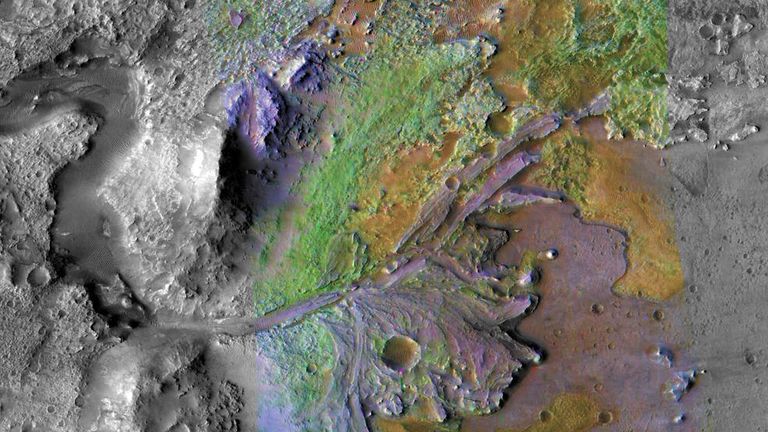Mankind has taken another step in its unprecedented task of bringing Martian rock, sediment and atmospheric samples to Earth for analysis.
NASA has announced the selection of Lockheed Martin to build the Mars Ascent Vehicle (MAV), a lightweight rocket that will launch samples from the surface of Mars to head back to Earth.
The MAV will become the first rocket fired from another planet and, if successful, will help to complete the spaceflight aspects of the mission being carried out by the Perseverance rover.
The MAV will only need to bring itself into orbit, at which point a container will be captured by another spacecraft – the Earth Return Orbiter – which is expected to land in the early to mid-2030s.
Among the challenges facing the MAV development process is ensuring it is robust enough to survive the harsh environment on Mars while also adaptable enough to work with multiple spacecraft and small enough to fit inside the Sample Retrieval Lander due to launch no earlier than 2026.
What will the samples reveal?
Last September, NASA announced that the rock samples on Mars collected by the Perseverance rover “reveal a potentially habitable sustained environment” existed on the planet, meaning alien life could have too.
Salts spotted within these rocks are suspected to have formed when groundwater flowered through the original minerals of the rocks, or when liquid water evaporated.
NASA hopes that the salt minerals have trapped tiny bubbles of ancient Martian water, which could serve as microscopic time capsules – as salt minerals are known to preserve signs of ancient life on Earth.
Signs of alien life?
The space agency selected the Jezero crater on Mars for this mission specifically because it showed signs of being an ancient river delta, and the aim was to drill deep down into the sediment where this river once flowed to check for remnants of alien life.
It is certain that a lake once filled the crater, but for how long is unknown. NASA previously said its scientists couldn’t dismiss the possibility that Jezero’s lake was a “flash in the pan” filled with floodwaters that dried up in the space of 50 years.
But the signs from the rock samples suggest groundwater was present for much longer than that.
Although the scientists can’t be certain whether the water that altered these rocks was present for tens of thousands of years or for millions of years, they are growing increasingly certain it was there long enough to welcome microscopic life.
“These samples have high value for future laboratory analysis back on Earth,” NASA’s Mitch Schulte said at the time.
The development of the MAV will play a crucial role in realising that value.








